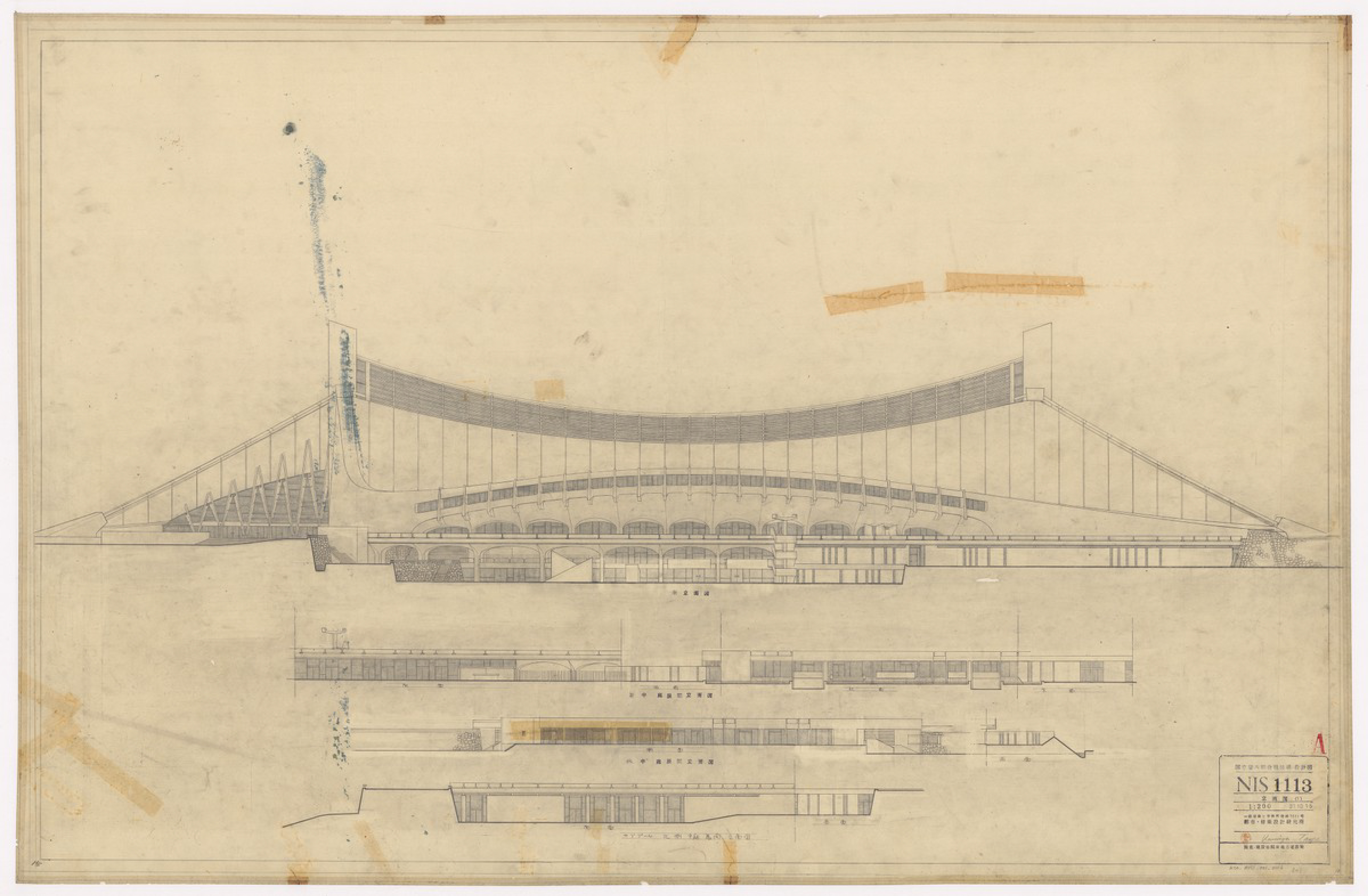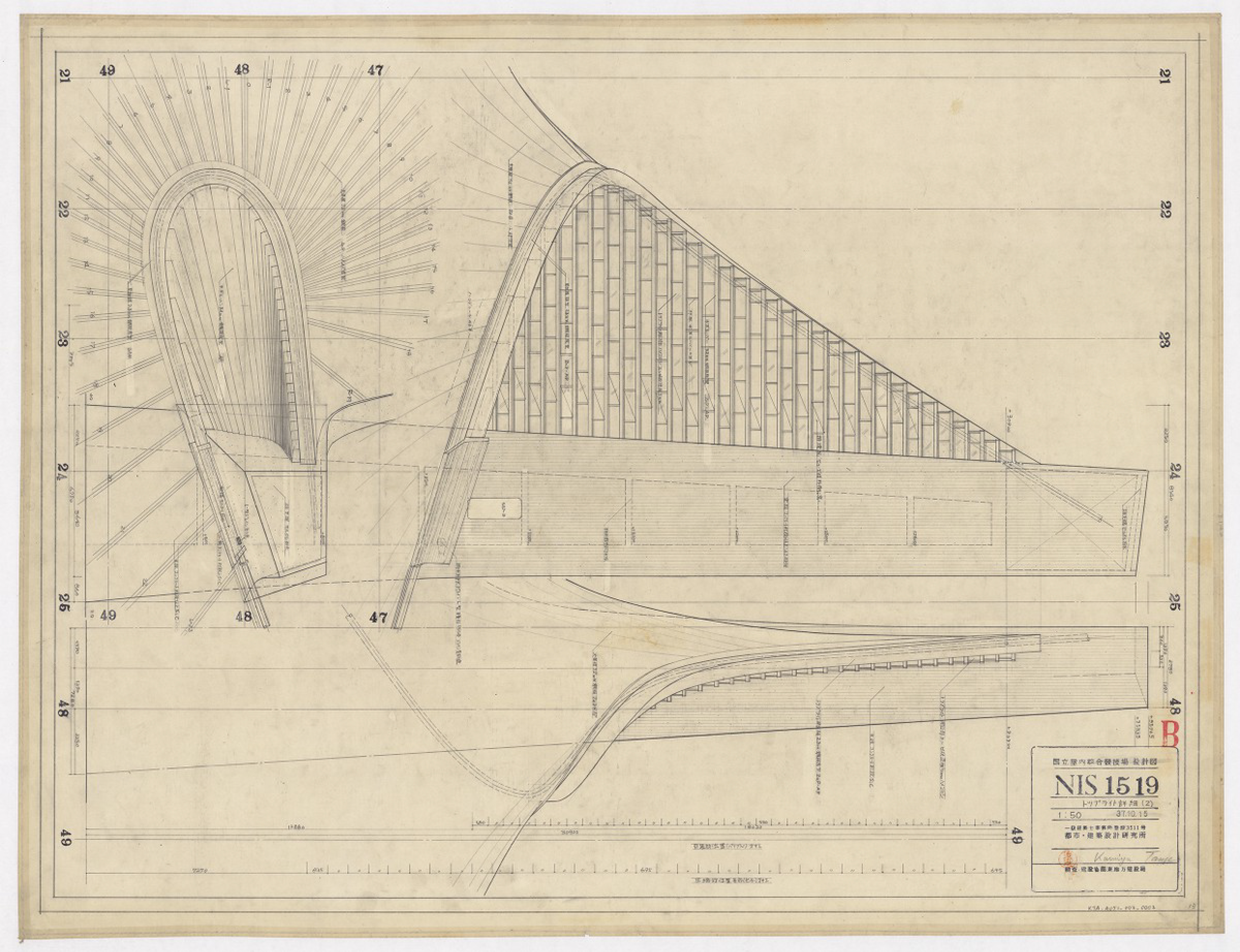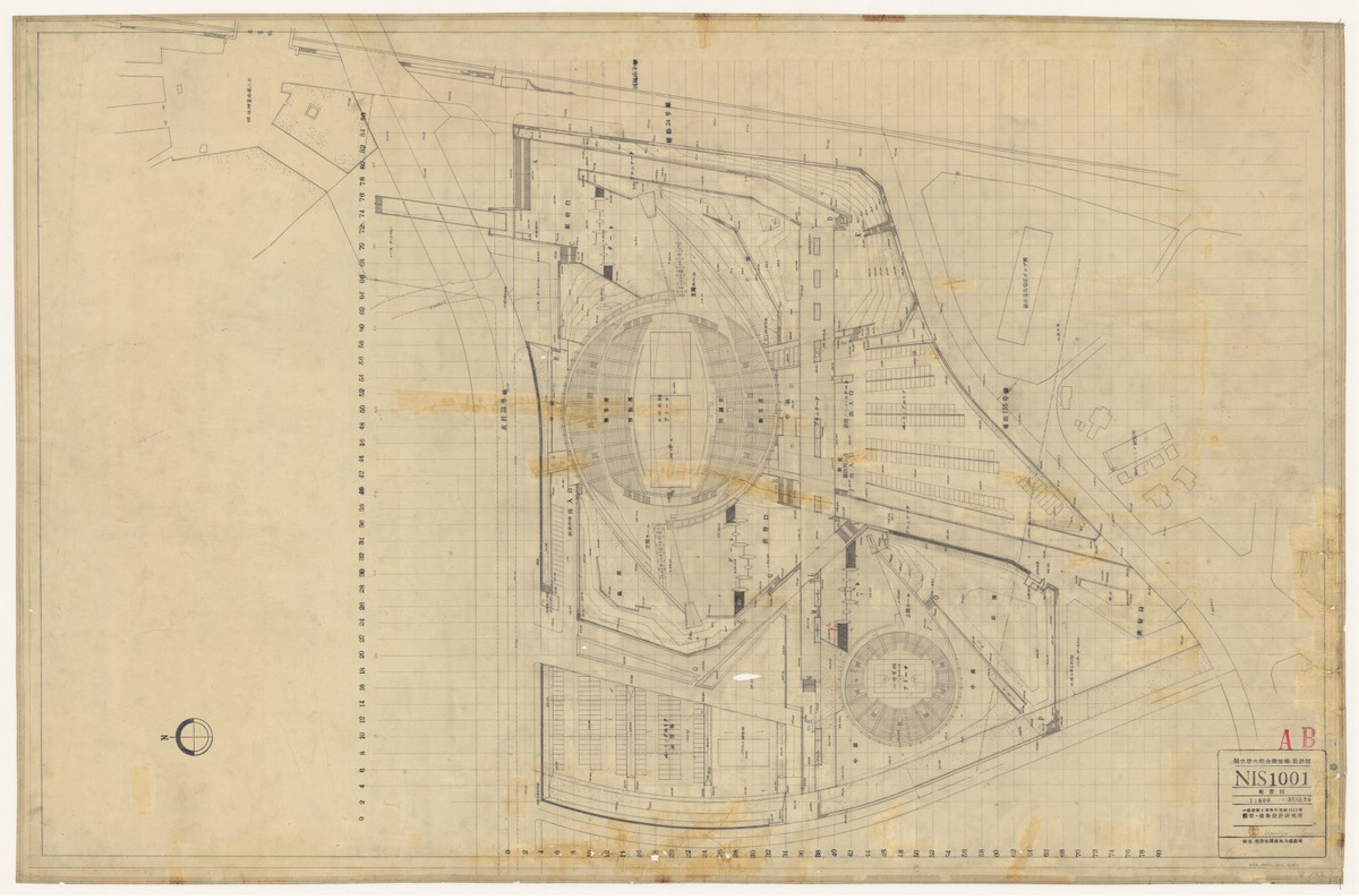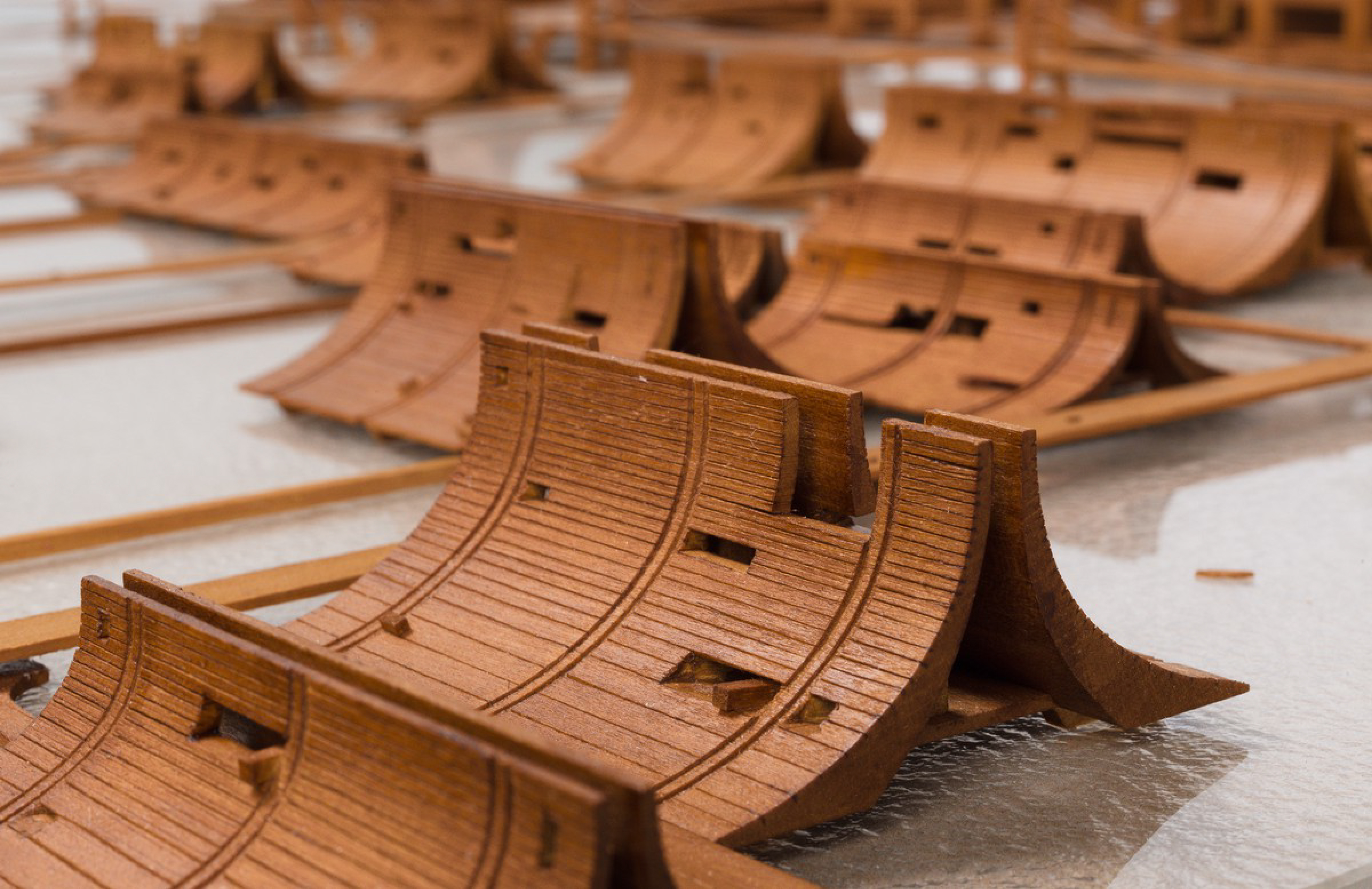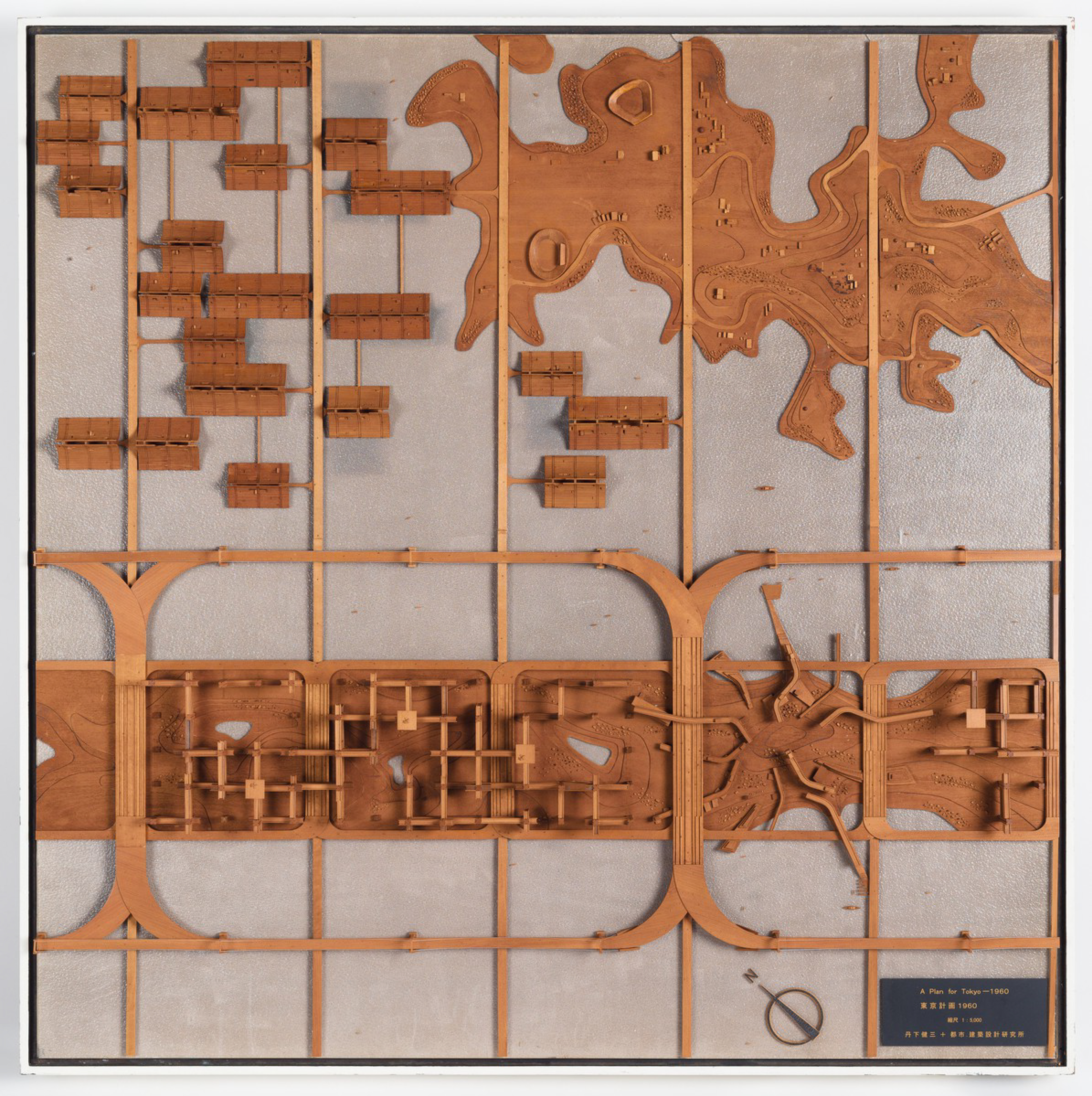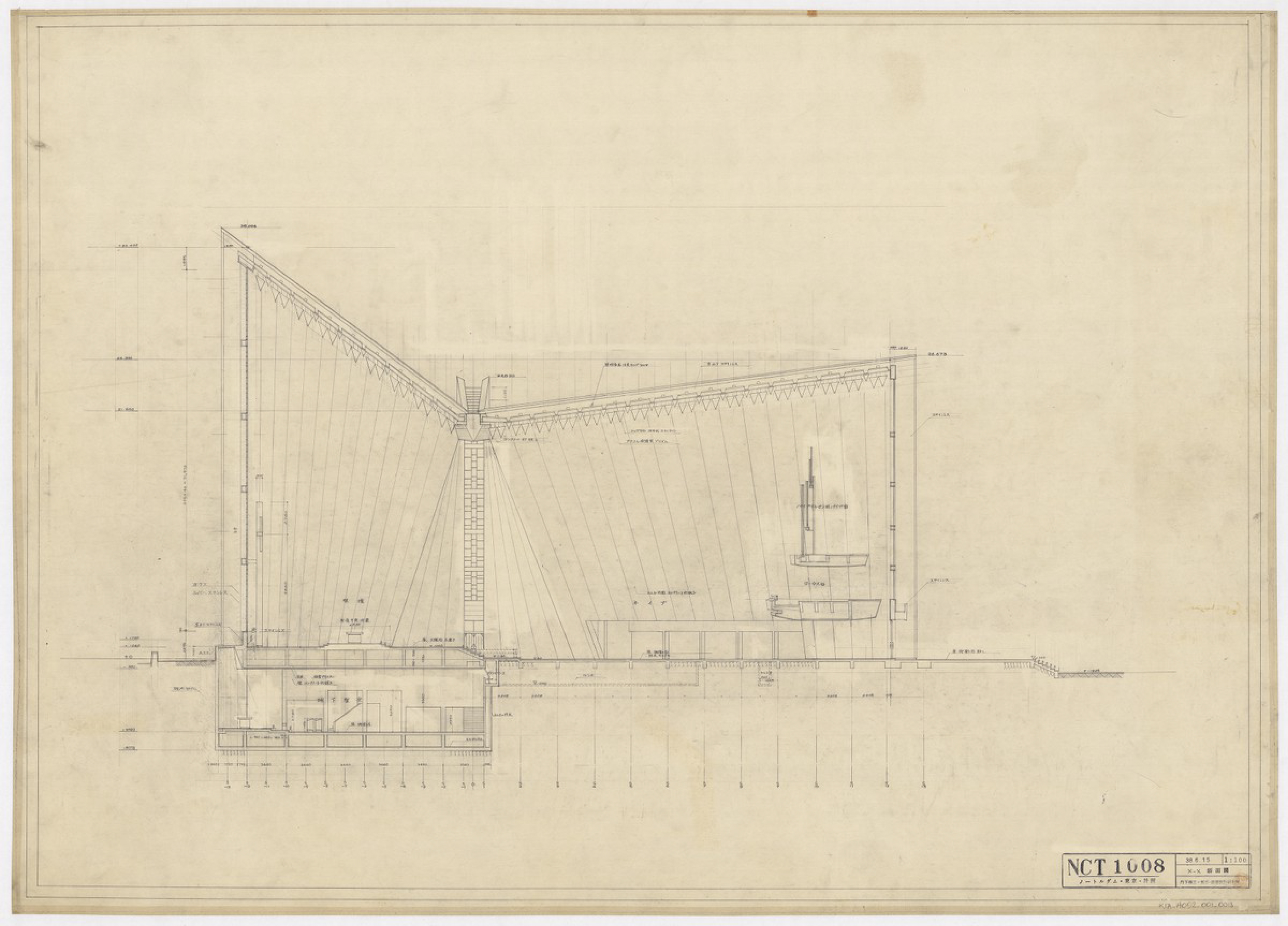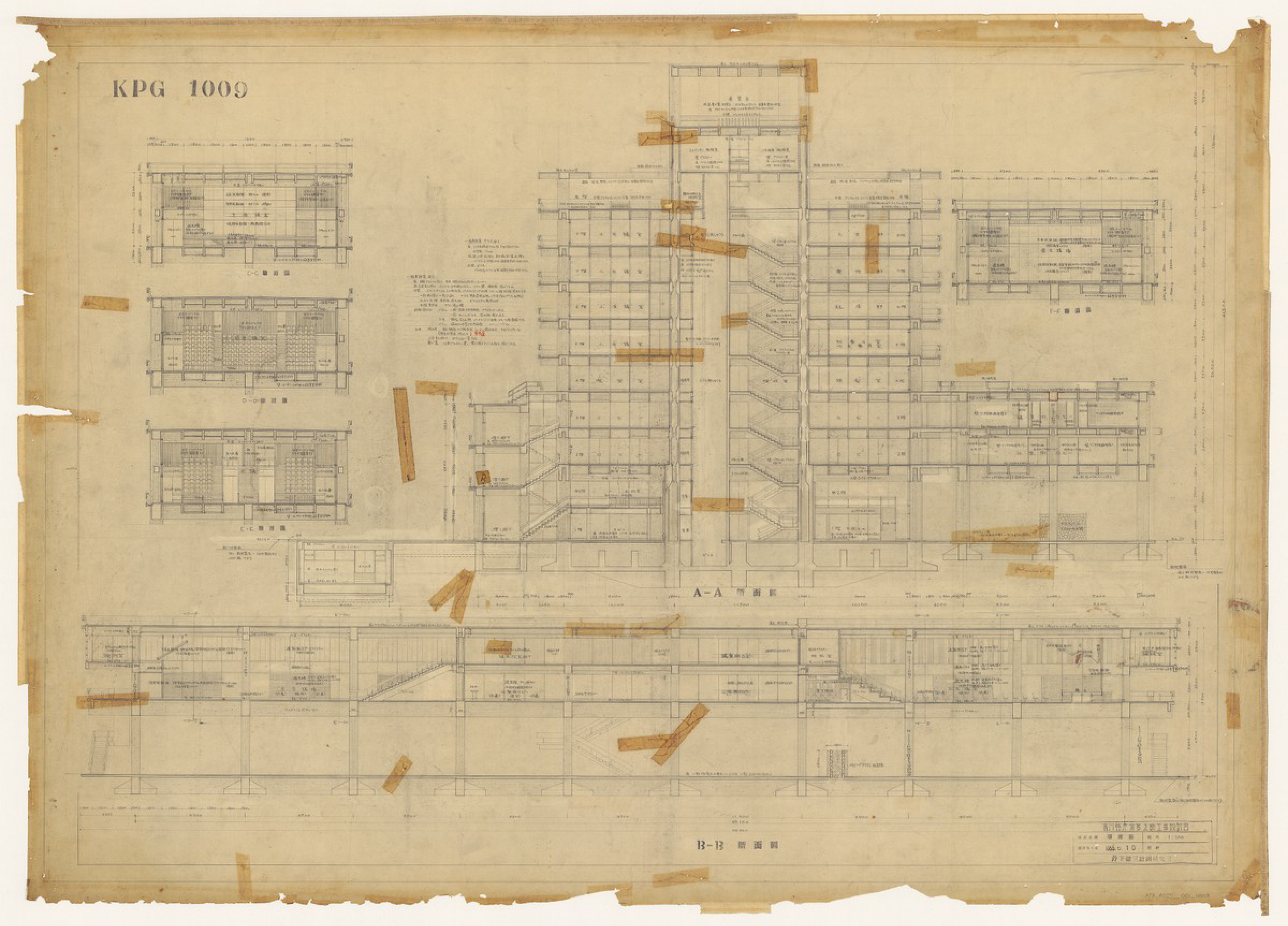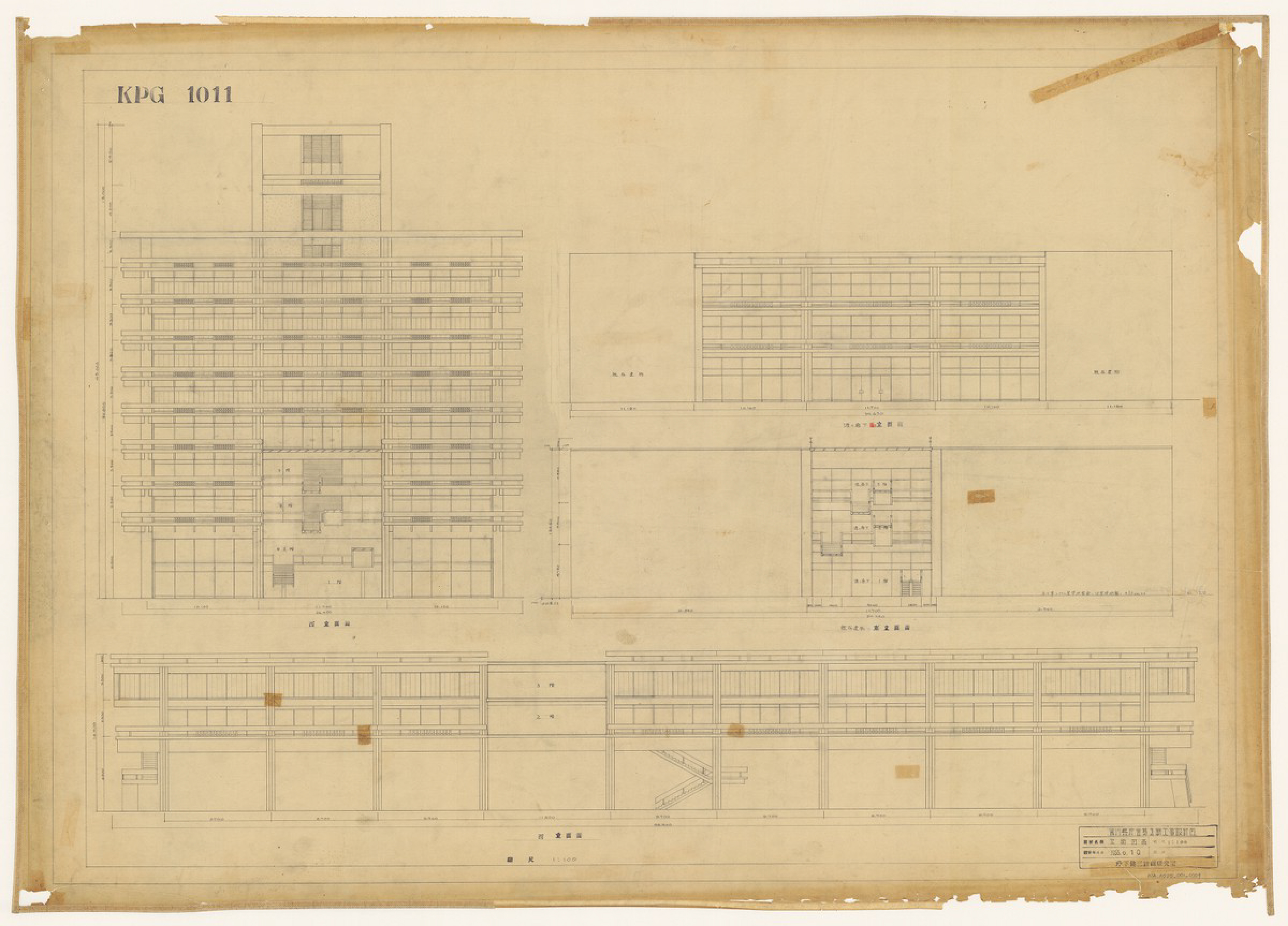Photographer Naoya Hatakeyama on the Act of “Tracing Lines”
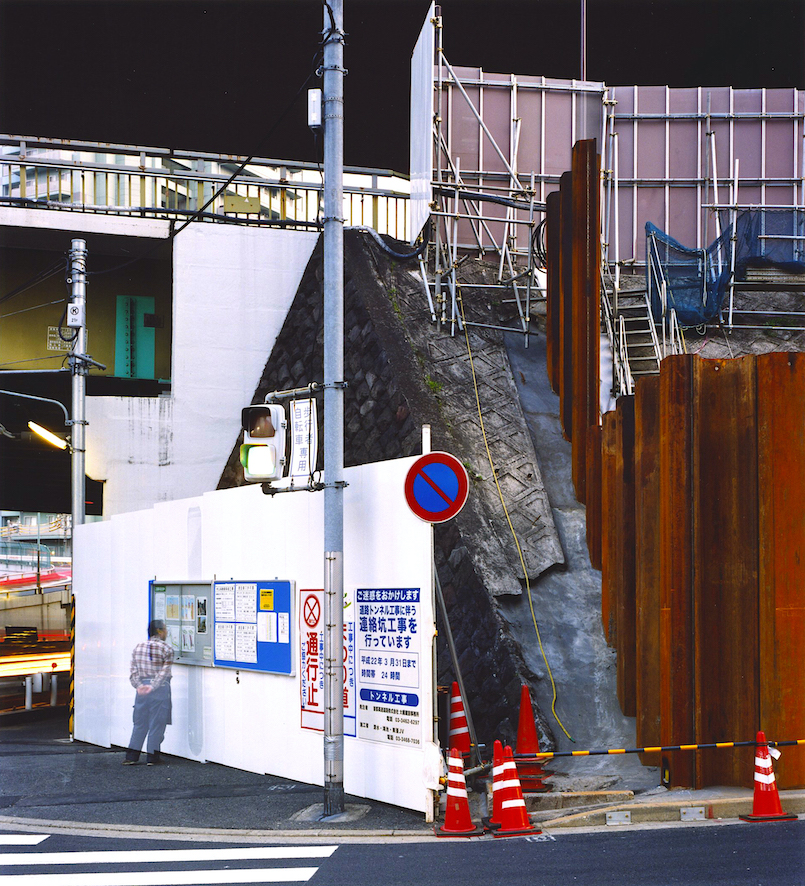
The Kenzō Tange Archive, donated to the GSD in 2011, contains the legacy of one of the most significant architects of the twentieth century. The reach of Tange’s global architectural practice is well represented, with 140 projects in Asia, Europe, Africa, the Middle East, and North America over fifty years of practice, from the 1940s to the 1990s. This archive is illustrative of a twentieth-century phenomenon, whereby the practice of architecture and its allied design disciplines expanded geographically and became increasingly interdisciplinary.
The Kenzō Tange Archive is distinguished by its wealth of architectural drawings—over 20,000—and the generous accessibility provided by the Frances Loeb Library at the GSD in collaboration with Harvard University's Weissman Preservation Center. To date, more than 750 of the drawings in this archive have been preserved, digitized, and made available online to researchers, curators, and the general public. This exceptional largesse has allowed many researchers worldwide to produce new research, publications, and exhibitions, making this archive one of the most actively used collections at the GSD. Furthermore, materials from the archive such as drawings and models have traveled on loan to museums in Japan, France, and the United States.
Five topics will be touched upon here: the background of the donation; the content of the archival materials; their significance in the context of an academic institution; the preservation assessment carried out for the responsible stewardship of the collection; and the commitment of the Frances Loeb Library at the GSD to make this collection discoverable and accessible worldwide.
Background. Kenzo Tange (1913–2005) and the Tange family had a long-standing relationship with the GSD: Tange had been Walter Gropius’ host when Gropius first visited Japan in 1954; he received an honorary degree from Harvard University in 1971; and the GSD established the Kenzo Tange Visiting Professorship in 1984. Mohsen Mostafavi, who was the dean of the school at the time of the donation, was instrumental in bringing this archive to Harvard. The archive arrived at the GSD in 2013 in nine crates of drawings and two crates of books that traveled by air and ship.
Content. The ever-expanding geography and scope of Tange’s projects ultimately translates into an unprecedented number of exquisite architectural drawings, which form the bulk of the holdings. Like other twentieth-century architectural collections, it includes sketches, design development, presentation, and construction drawings for transportation hubs, residential, commercial, religious, and government buildings, as well as master plans at an urban, metropolitan, and regional scale. The archive also includes five architectural models, the original model of Tokyo Bay (1960, “A Plan for Tokyo 1960”) among them. Also included are publications: books, journals, and pamphlets, as well as a group of portfolios of clippings kept by Tange while he traveled for the opening of his projects, and a couple of manuscript notebooks, including the one he kept while teaching a studio at MIT in 1959 related to the Boston Harbor and the envisioning of a “community on the sea.”
Projects represented include the Hiroshima Peace Memorial Museum (1949), Kagawa Prefectural Government Building (1958), Kurashiki Civic Center (currently Kurashiki City Art Museum, 1958), Tokyo Metropolitan Government Building (1958), Yoyogi National Gymnasiums (currently Yoyogi 1st and 2nd Gymnasiums, 1964), Shizuoka Press and Broadcasting Center in Tokyo (1967), and Saint Mary’s Cathedral in Tokyo (1967). Also present are unrealized projects such as the master plan for the Holy Site of Muna, Mecca Pilgrimage (1973) and a diversity of competition drawings, such as those for the reconstruction of Skopje, that ended in a collaboration with local architects and the United Nations after the devastating earthquake of 1963.
Significance. The Kenzō Tange Archive, as a collection, offers great possibilities for educational purposes and research. The openness of this archive to the general public further serves to advance disciplinary knowledge. When students and scholars engage, for example, with the thinking behind Tange’s proposals for inhabiting the water in a country with limited land availability, they can question their own assumptions about the built environment. By understanding the material techniques and construction systems behind some of Tange’s buildings, they can reimagine the structural and spatial dimension of design at a scale they may have never encountered before. Tange’s architectural practice continues to influence the field today because his work broadened the understanding of architecture's capabilities, envisioning and constructing a better world through design. The location of this archive at the GSD, one of the most international schools at Harvard in terms of faculty membership, student body, and presence of international researchers, further multiplies its potential reach.
Stewardship. To understand the challenges of maintaining this collection, it helps to explain why architectural collections are not easy to care for. They are characterized by drawings in large sizes that are difficult to handle safely, as well as fugitive media, deteriorated supports, and inadequate housing. The Tange archive contains original drawings in graphite or ink on trace, vellum, and mylar, sometimes with the addition of colored pencil and markers. Apart from transparent papers, there are also opaque papers and plastic films, many with damage in the form of creases, tears, and brittleness or fragility. Many of the drawings that are the result of reprographic processes, such as diazotypes, fade easily; and some silver-based prints already present signs of silver mirroring. Each requires a different preservation strategy according to its chemical composition (studied through spectrometer readings) or the presence of organic compounds (studied through nano-analysis).
The Kenzō Tange preservation report produced by the Weissman Preservation Center at Harvard in 2014 not only identifies media and supports and assesses their current condition, but also establishes recommendations and guidelines for the care of the drawings in perpetuity, from housing to handling and digitization. The arrangement and description of the collection was carried out between 2015 and 2018 by the Frances Loeb Library (with three Japanese students and three American students who had lived in Japan) to produce the finding aid that now provides online access to the collection.
Commitment. Design archivists build collections that deepen the understanding of architecture, landscape architecture, urban planning, and design (which, at the GSD, are all integrated within the same school). These collections address the past history of these disciplines and how that history relates to current disciplinary and cultural preoccupations, as well as the discipline’s present ideas and practices for these to be addressed through history in the future. We connect researchers to resources, making collections accessible for research purposes in a sustainable fashion so that scholars will have access today and for decades to come. Long-term considerations are paramount to the key activities of collecting, organizing, and preserving architectural collections.
At Harvard, we think of our curatorial role in the broadest sense: the creation and dissemination of knowledge. We do this by building collections, establishing connections within and between collections, and surrounding a work with a network of data and contextual information. For the Kenzō Tange archive, for example, we have indexed projects and geographic locations in Japanese so that the collection is also discoverable when searched in Japanese. In sum, curators perform a series of actions that enable discoverability for a constellation of new interpretations, knowledge, and ideas to be constructed.
In conclusion, we would like to honor Mrs. Takako Tange, the donor. Aware of the significance of her late husband’s legacy in the international architectural landscape, she believed that Harvard’s Graduate School of Design would be the best home for his papers, where they would be cared for in perpetuity and made available to a broad pool of international researchers. We are pleased to be carrying out this mission. You can access the collection here.
The Kenzō Tange Archive. Gift of Mrs. Takako Tange, 2011. Yoyogi Gymnasium (Tokyo). Elevation. Courtesy of the Frances Loeb Library, Harvard University Graduate School of Design.
The Kenzō Tange Archive. Gift of Mrs. Takako Tange, 2011. Yoyogi Gymnasium (Tokyo). Ground floor plan. Courtesy of the Frances Loeb Library, Harvard University Graduate School of Design.
The Kenzō Tange Archive. Gift of Mrs. Takako Tange, 2011. Yoyogi Gymnasium (Tokyo). Top light details. Courtesy of the Frances Loeb Library, Harvard University Graduate School of Design.
The Kenzō Tange Archive. Gift of Mrs. Takako Tange, 2011. Yoyogi Gymnasium (Tokyo). Layout drawing. Courtesy of the Frances Loeb Library, Harvard University Graduate School of Design.
The Kenzō Tange Archive. Gift of Mrs. Takako Tange, 2011. Tokyo Bay Model. Detail photograph. Courtesy of the Frances Loeb Library, Harvard University Graduate School of Design.
The Kenzō Tange Archive. Gift of Mrs. Takako Tange, 2011. Tokyo Bay Model. Detail photograph. Courtesy of the Frances Loeb Library, Harvard University Graduate School of Design.
The Kenzō Tange Archive. Gift of Mrs. Takako Tange, 2011. Tokyo Bay Model. Overview photograph. Courtesy of the Frances Loeb Library, Harvard University Graduate School of Design.
The Kenzō Tange Archive. Gift of Mrs. Takako Tange, 2011. St. Mary’s Cathedral (Tokyo). Section. Courtesy of the Frances Loeb Library, Harvard University Graduate School of Design.
The Kenzō Tange Archive. Gift of Mrs. Takako Tange, 2011. Kagawa Prefectural Government Building. Sections. Courtesy of the Frances Loeb Library, Harvard University Graduate School of Design.
The Kenzō Tange Archive. Gift of Mrs. Takako Tange, 2011. Kagawa Prefectural Government Building. Elevations. Courtesy of the Frances Loeb Library, Harvard University Graduate School of Design.
